Serendip is an independent site partnering with faculty at multiple colleges and universities around the world. Happy exploring!
Out of the Closet: Fashion's Influence on Gender and Sexuality
Mark Twain once said, “Clothes make the man, naked people have little or no influence on society.” If this is true, and clothes really do make the man, then what happens when clothes make the man a woman, or vice versa? If the main function of clothing is to literally cover up or hide our sex, then the main focus of fashion is to exploit our gender. The clothes we wear let the outside world know who we are, and there is a lot of room to play. Men can become queens, women can be kings, and with androgyny, it can all be left a mystery.
The way we dress gives an immediate impression of who we are to the world. Throughout history, from fairy tales to historical figures, fashion has undoubtedly played a major role in defining and exemplifying our gender roles in society. From the Hippies of the past to the Hipsters of today, our culture is built on individuals using fashion as a means to explain and exhibit personal beliefs to society.
Fashion and clothing are an essential part of the gender transformation movement. In examining the field of gender expression through fashion, I recognize that, categorically, there are many different ways of expressing queer identity, and in no way do I wish to separate or marginalize any of these. It is also important to note that many people who dress across genders are not, or do not classify themselves as, homosexuals. Gender expression is not necessarily an inherent indicator of sexual orientation. This is a complex area and expands to include drag queens, transvestites, butch, femme, (and all sub categories of) genderqeer, transgender and androgynous peoples.
Feminists have long been debating the notion of the fashion and gender conundrum, and what it means in society to dress in not only socially expected gender ideals, but also what it means to reverse or reject typically female or feminine ways of dressing. In this instance, many women have taken on a more masculine way of dressing in order to exhibit to society their personal feelings about gender categories. During the second wave feminist movement of the 1970’s, many women rejected their femininity altogether in order to gain more power, and to attempt to free themselves of the burden of being viewed solely based on their beauty or femininity. Whether this rebellion was successful or not is still widely debated today. In Jennie Ruby’s article entitled “A Lesbian Feminist Fucks With Gender,” she writes, “I have for as long as I can remember rejected femininity and everything that goes along with it. My clothing style has always been what some would call dykey, androgynous, or even butch.” She goes on to say, “As a feminist I reject makeup because to me it means my face is not good enough the way it is, and by wearing no makeup I affirm that it IS good enough” (Ruby 4). While many feminists still regard and observe this theory, there has also, in recent years, been a reclaiming of femininity and female expression through fashion. These are just some examples of how fashion has influenced many different queer and feminist transformations throughout history.
Culturally, there have been many examples of gender bending in film and TV. From Marlene Dietrich’s infamous scene in the 1930 film Morocco, where she dons a tuxedo and kisses another woman, to 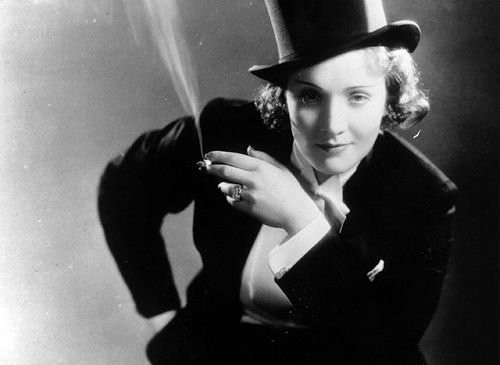 the more recent examples of drag in movies like Hedwig and the Angry Inch, Too Wong Foo, and The Adventures of Priscilla: Queen of the Dessert, and the popular TV show “Ru Paul’s Drag Race”, it is clear that society has somewhat recognized cross dressing as a means to transgress gender norms. While this type of gender expression through fashion is extreme, it is important to recognize the drag queen’s permanent impact on society. It is also important to note that many view this type of drag as merely an overly exaggerated “impression” of femaleness, and do not regard drag queens in the same way they would regard transgendered or transsexual persons. However, the use of clothing as a means to express these different gender identities remains a constant factor in all regards to transgressing gender.
the more recent examples of drag in movies like Hedwig and the Angry Inch, Too Wong Foo, and The Adventures of Priscilla: Queen of the Dessert, and the popular TV show “Ru Paul’s Drag Race”, it is clear that society has somewhat recognized cross dressing as a means to transgress gender norms. While this type of gender expression through fashion is extreme, it is important to recognize the drag queen’s permanent impact on society. It is also important to note that many view this type of drag as merely an overly exaggerated “impression” of femaleness, and do not regard drag queens in the same way they would regard transgendered or transsexual persons. However, the use of clothing as a means to express these different gender identities remains a constant factor in all regards to transgressing gender. 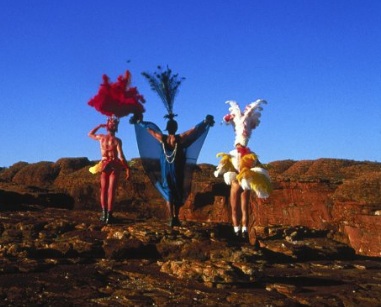
In S/he: Changing Sex and Changing Clothes, Claudine Griggs (after interviewing and collecting data from several transsexuals) states, “even if gender is an inherent quality, and they [the transsexuals] agree that it is, interactionally it remains dependant on expression” (Griggs 42). While not all forms of gender expression through clothes are as extreme as that of a drag queen (or transsexuals), all of these examples rely on clothing as a mechanism for gender expression. Also, while all these instances are focused mainly on dressing across genders (man as woman, woman as man), there is a more neutral approach to creating gender through fashion.
Androgyny is perhaps the most intriguing use of fashion to manipulate gender. The music and fashion industries especially have made androgyny iconic, and for good reason: The ambiguity of androgyny serves to heighten, or increase sexual interest. Perhaps the most well known androgynous icon would be David Bowie’s fantastical alter ego Ziggy Stardust. With milky white skin, a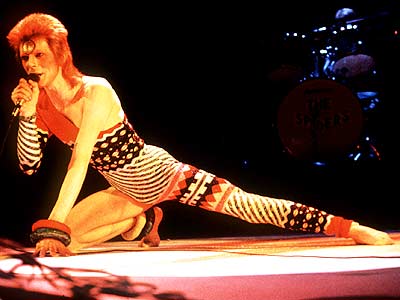 tremendously thin frame, and flaming orange hair, Stardust serves as an iconic, if not flamboyant figure of in-your-face gender ambiguity.
tremendously thin frame, and flaming orange hair, Stardust serves as an iconic, if not flamboyant figure of in-your-face gender ambiguity.
Less extreme examples include musicians like Annie Lennox and Patti Smith, whose 1975 album cover for Horses produced a more punk rock 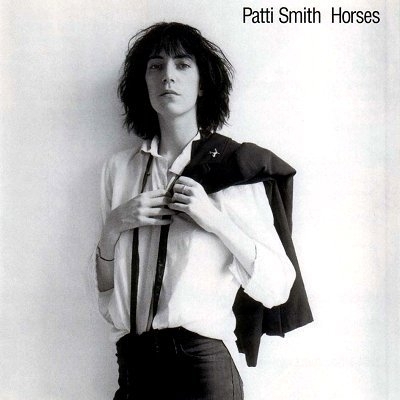 take on androgyny. Even Lady Gaga (who fought rumors of being intersex, or a drag queen when she first became popular due to her over the top wigs and makeup and extreme costumes) can translate the idea of androgyny on a certain level. Androgyny muddles the societal gender equation, by adding a third variable to the male/female binary. In effect, it brings sex (not gender) to the surface, and forces the viewer to choose between the two.
take on androgyny. Even Lady Gaga (who fought rumors of being intersex, or a drag queen when she first became popular due to her over the top wigs and makeup and extreme costumes) can translate the idea of androgyny on a certain level. Androgyny muddles the societal gender equation, by adding a third variable to the male/female binary. In effect, it brings sex (not gender) to the surface, and forces the viewer to choose between the two.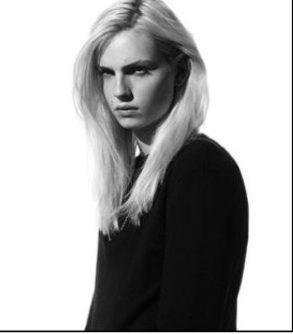
There will always be disputes among feminist and queer theorists about socially constructed ideals and gender norms. Some would argue that fashion is merely “imitating” an already constructed ideal of maleness or femaleness. However, it is important to recognize that fashion is a device that can be individually manipulated and molded as a means to break through gender boundaries. Queer pioneers like Leslie Feinberg and Brandon Teena used clothing as an advantage, not an obstruction, to portray their gender (not their sex) to the outside world.
If we can start to understand fashion as a means to influence our own gender understanding and step outside the binary implications of gender, we can better recognize the importance of the power that fashion has on societal gender views, and its control over not only individuality, but culture as well. It is through fashion, clothing choice and personal style, that we can manipulate the gender binary and carve out our own personal stylized gender identity.
Works Cited
Griggs, Claudine. S/he: Changing Sex and Changing Clothes. Oxford, UK: Berg, 1998.
Ruby, Jennie. "A Lesbian Feminist Fucks With Gender." Off Our Backs 23.8 (1993): 4-5+. JSTOR. Web. 30 Sept. 2011. <http://www.jstor.org/stable/20834528>.
Photos:
Andrej Pejic photo: Huffingtonpost.com
Marlene Deitrich photo: MTV.com
Patti Smith Horses album cover photo: Patti Smith.net
Priscilla: Queen of the Dessert photo: IMDB.com
Ziggy Stardust photo: fanpop.com



Comments
Observations From The Field --
Allison is cis-M, ensconced in "gender performance" which "appropriates and subverts the gender signifying hegemony of the hetero-normative dyad."
We borrow from Dr. Judith Butler, Ph.D., U of California, Berkeley, Dept. of English, Gender Critical Theory -- I'd start reading w/ "Gender Trouble" . . . Butler has been accused of being "difficult to access." She writes like a French post-structuralist. Butler talks about "gender performance" -- how we perform gender presentation, consciously or inherently.
And so, from the other side of the fence . . .
Cis-sexuals don't, but trans-gender individuals give a great deal of thought to performance and presentation of gender. 20th Century, 21st Century there has been a consumer driven shift in fashion toward "unisex" -- but in essence this amounts to "girls wearing boy's clothing." Women in men's attire is sexy. Men in women's attire is "femme" -- and confusing, socially derided.
That said, there is a great deal of "women's" clothing which is fashioned so entirely "unisex" that except for minor details like neck line, and button flies, pocket size, fabric weight, it's virtually indistinguishable from men's clothing.
Lot's of stuff sits on the gender's edge -- earrings being an obvious example. Tattoos used to be the realm of males only. Long hair, bags/purses are no longer gender markers.
Heaps of women's fashion is scandalously sexist, oppressive: High heels, bras, make-up (My face works fine just like it is!), hosiery, foundation garments, bustles, bustiers . . . "Can't get anything done when trussed up like a Christmas Goose!"
And so, thankfully, rigid sex-roles and associated fashion options are relaxing. I personally present somewhere in between, "appropriate and subvert the signifiers of gender." Nonetheless, there's no doubt about which restroom I'm going to head for. I present "non-binary" . . . but obviously, on account of some undeniable effects of androgens, I'm ineluctably cis-M. And I'm making a concerted, deliberate political statement about the insufficiency of the current gender dyad.
cross-dressing and de-dressing
I love the double meaning of your title and the clever way you crafted your opening paragraph! (The word that comes to my mind is “hook”— for you not only engage your readers, but also create a place to hang your exploration of clothing, fashion, sexuality, and gender.)
Your illustrations of cross-dressing and drag in TV and film provide a helpful cultural context for your analysis, and I appreciate the time you took to acknowledge the complexity of the intra-actions between clothing/fashion/gender/sexuality--that we should not create a single analytic category for people who are transgendered, transsexual, and/or drag queens, and that “gender expression is not necessarily an inherent indicator of sexual orientation.” You also move beyond a simple recognition of fashion's power to influence how society views (and constructs) gender; you encourage us to take hold of that power and to use it to “manipulate gender binaries and carve out our own personal stylized gender identity.”
I found your exploration of androgyny in today’s music industry to particularly interesting, especially your explanation of why it has achieved iconic status: “The ambiguity of androgyny serves to heighten, or increase sexual interest … in effect, it brings sex (not gender) to the surface…” Before reading your posting, I had considered androgyny to be a desexualized state, but the images you include argue against that interpretation. Thank you for helping me recognize (and challenge) my assumptions!
Sometime I’d like to hear more of your thinking regarding the Griggs’ quote: “even if gender is an inherent quality, and they [the transsexuals] agree that it is, interactionally it remains dependant on expression.” If gender is an “inherent quality” does that mean that it is biologically determined? That there are genetic and/or prenatal conditions that “make” someone more or less feminine/masculine/androgynous? Are those even the appropriate categories to consider?
…and a teacherly note on style (writing): Don’t feel compelled to sum up a coherently composed paragraph by repeating what you’ve already revealed to us. I would strike out: “These are just some examples of how fashion has influenced many different queer and feminist transformations throughout history.”